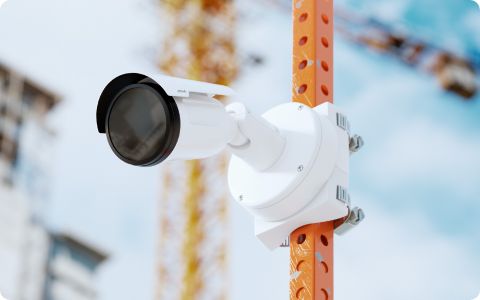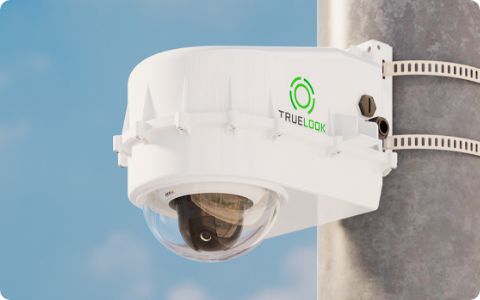
Comprehensive jobsite security is a cornerstone of any successful construction project. Unfortunately, construction sites are increasingly targeted for theft, with equipment losses amounting to up to $1 billion annually in the United States. This staggering figure doesn’t even include the costs associated with stolen materials such as copper, steel, and lumber, which are also common targets.
Adding to these challenges, security violations are becoming more costly. In 2024, OSHA increased the maximum penalties for willful and repeat violations to $161,323, while serious and other-than-serious penalties rose from $15,625 to $16,131.
The good news? As security technology has advanced, establishing comprehensive and robust safety measures across your jobsite has become easier and more affordable. Here are some of the most effective examples of construction technology to maximize your jobsite security.
1. Leveraging IoT and Telematics
One of the leading examples of construction technology is the integration of telematics systems in construction machines and equipment. This technology is becoming increasingly common thanks to advancements in IoT and GPS technologies. These telematics systems allow construction companies to monitor equipment through sensors and onboard diagnostics, tracking location, performance, and operations in real time. Data like working hours, fuel consumption, and engine temperatures are sent to a central tracking application, enhancing jobsite security by ensuring equipment is used correctly and within designated areas.
Additionally, many telematics systems provide project managers with alerts when equipment is checked out or returned, accessible through a browser-based interface on their desktop or smartphone. GPS-enabled virtual fences can even be set up to automatically shut down equipment if it is operated outside a designated jobsite area. In the unfortunate event of theft, the GPS system can help project managers quickly locate and recover the equipment—and potentially find the culprit.
2. Using RFID Tags for Security
RFID technology stands out as another effective example of construction technology used to increase jobsite security and reduce theft. Originally developed for supply chain management, RFID tags are now commonly employed by construction firms to track who checks out equipment, monitor when it’s used, and record attendance, eliminating the need for traditional timecards.
RFID tags include a microchip that stores and processes data, along with an antenna for receiving signals. RFID readers can be placed at jobsite trailers or equipment warehouses. When an employee or piece of equipment passes by the reader, electromagnetic waves activate the tag, which then sends data to the project tracking software. This example of construction technology allows project managers to monitor the location and movement of assets in real time.
In industries like industrial, gas, and oil construction, companies are using RFID tags and readers for equipment, inventory, and workforce management, while also boosting jobsite security and improving worker safety.
3. Increasing Security with Construction Cameras
Construction cameras are pivotal examples of construction technology that enhance jobsite security, especially since most jobsite theft occurs at night or on weekends when the crew has gone home and no one is there to watch for intruders.
These cameras offer time-lapse photography, remote live viewing, and security monitoring. Some models even allow you to control the camera remotely, enabling you to pan, tilt, and zoom in on different areas to spot a potential intruder. These advanced solutions provide high-definition video, capturing clear evidence even in low light or from a distance. The footage also serves as a documented record of any security incidents.
Cameras also act as a visual deterrent. Placing them in visible but hard-to-reach locations can be enough to discourage potential thieves. For added protection, cameras can come equipped with strobes and sirens that trigger automatically when unauthorized personnel enter the jobsite after hours. These features help secure the jobsite against theft and vandalism.


4. Securing Your Jobsite with Drones
Drones have become increasingly popular examples of construction technology used for enhancing jobsite security. They can be used for daily monitoring to document and provide evidence of theft, vandalism, or safety violations. Drones are also valuable for increasing security during critical moments, such as the unloading or loading of new materials or equipment, when the risk of theft or injury is higher.
5. Biometric Access Control for Sensitive Areas
Biometric access control systems are advanced examples of construction technology that offer a significant upgrade in jobsite security by allowing only authorized personnel to enter the site or specific areas. Unlike traditional systems that rely on cards, codes, or keys, biometric systems use fingerprint, facial, palm, or eye recognition to manage access. Since physical traits are much harder—if not impossible—to replicate, these systems offer a higher level of security.
While the cost per door can range from $2,000 to $4,000, the investment can be well worth it, particularly for securing sensitive areas of the jobsite. These systems also provide detailed logs of entry and exit times, enhancing accountability and enabling better tracking of personnel movements.
Don’t Forget the Basics
Of course, construction firms should also work to create a culture of security and accountability among employees, and take the following standard precautions:
- Provide sufficient lighting after hours: Keeping all areas of the jobsite well-lit, especially during the night after workers have gone home, serves as a deterrent—thieves don’t want to be seen. Combining good lighting with another one of the above examples of construction technology like surveillance cameras can significantly reduce the risk of theft.
- Install signage to deter thieves: Clearly displayed signs can discourage criminal activity by letting potential intruders know the jobsite is protected and under surveillance. When paired with effective construction technology, signage becomes an even more powerful deterrent.
- Secure the perimeter with a physical fence: A standard fence serves as a first line of defense, adding an extra barrier for thieves after hours. Integrating fencing solutions with modern technology, such as motion sensors and alarms, can further enhance jobsite security.

